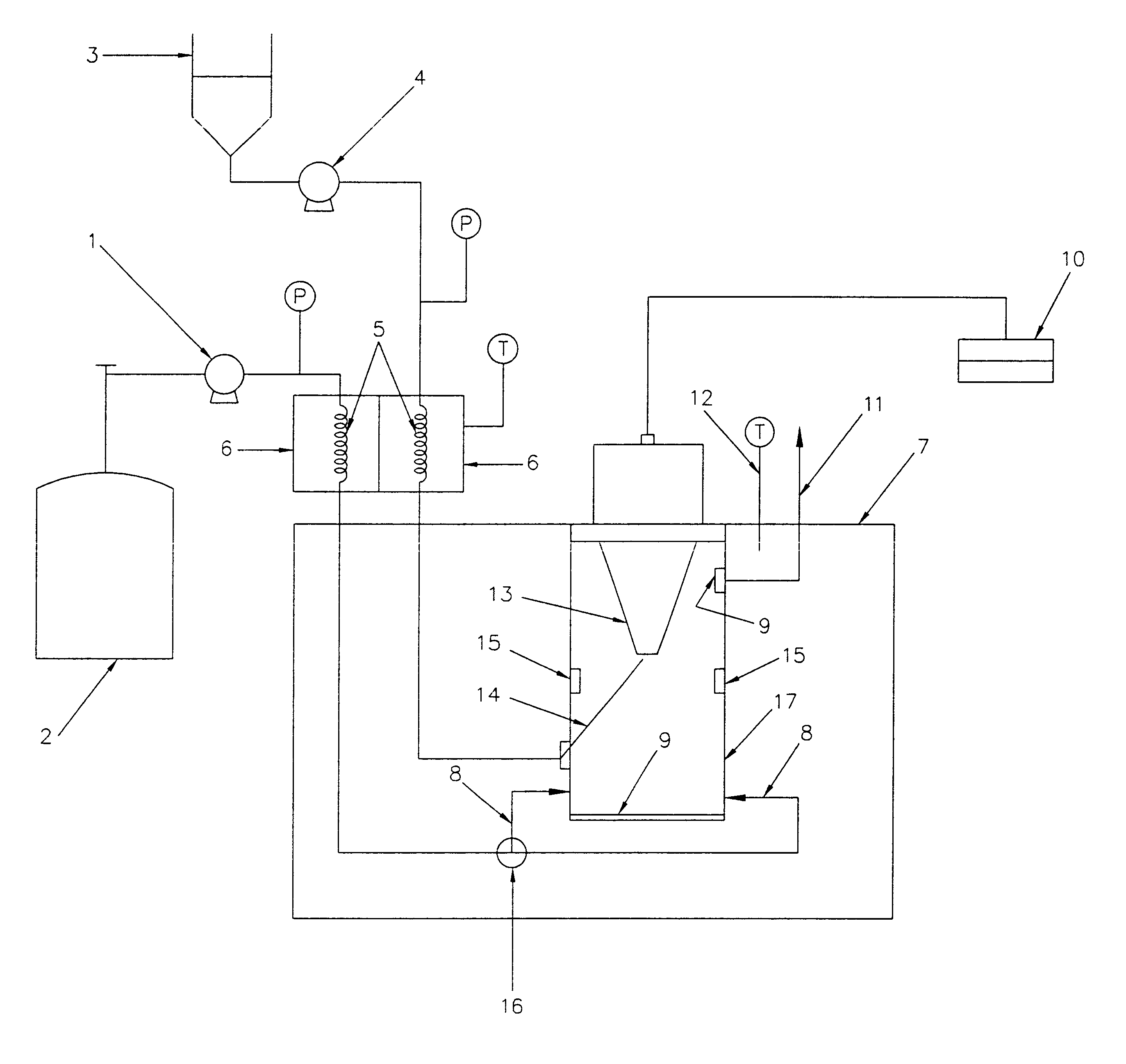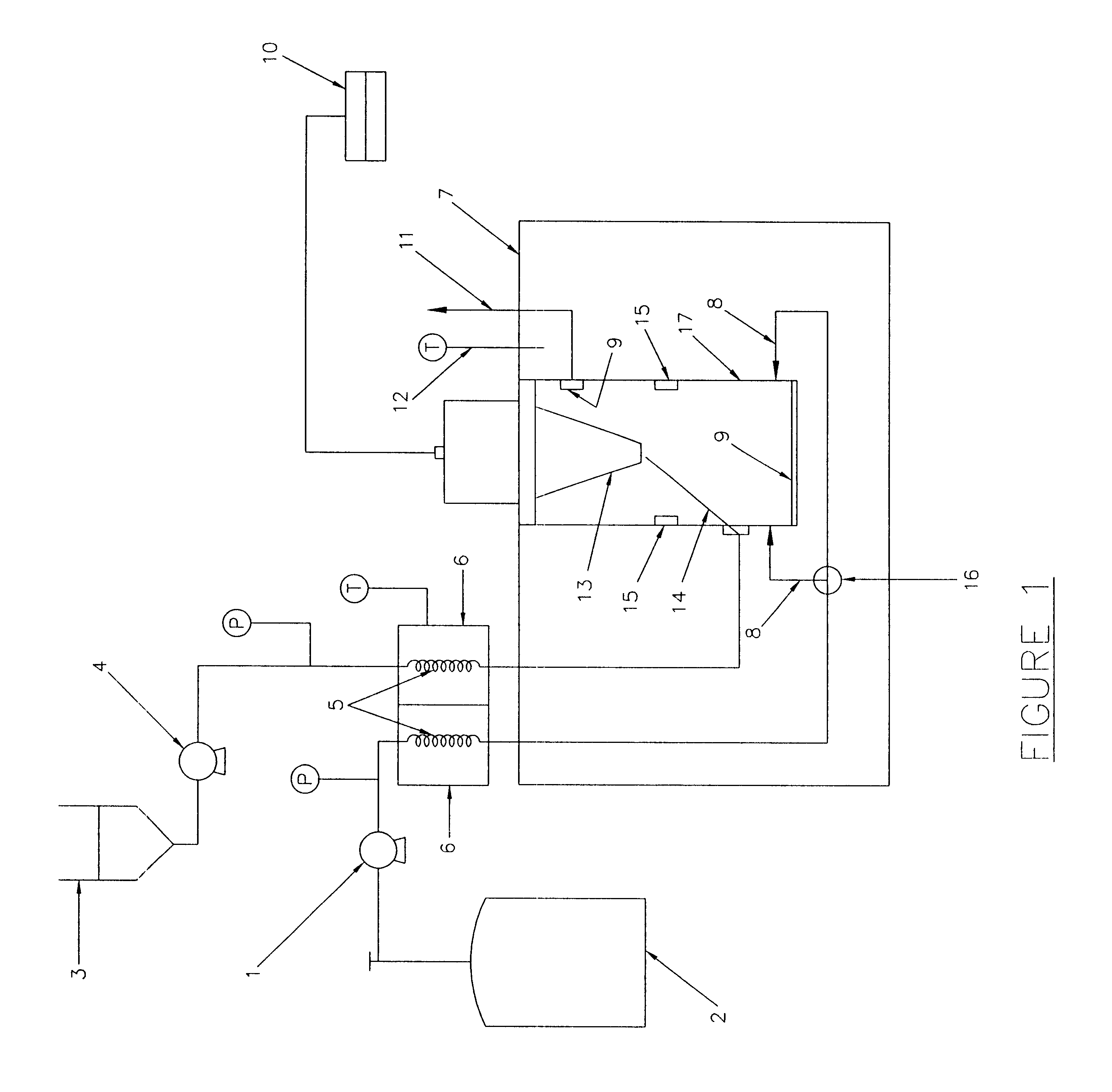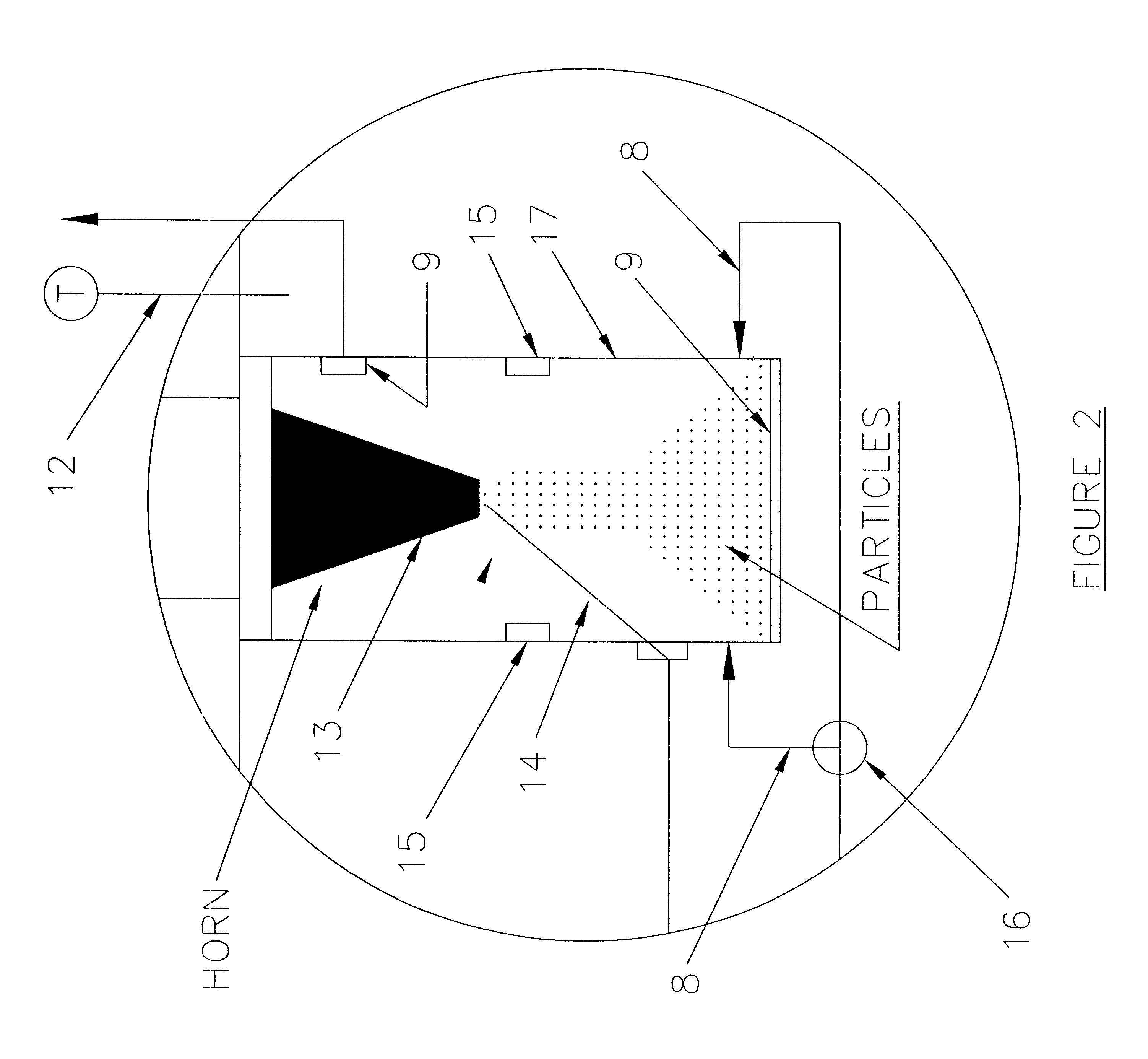Method of forming nanoparticles and microparticles of controllable size using supercritical fluids with enhanced mass transfer
a supercritical fluid and nanoparticle technology, applied in the direction of microcapsules, granulation using vibration, enzymology, etc., can solve the problems of unsuitable inability to treat biological and pharmaceutical substances, and low final product yield
- Summary
- Abstract
- Description
- Claims
- Application Information
AI Technical Summary
Problems solved by technology
Method used
Image
Examples
Embodiment Construction
relate to the precipitation of pharmaceuticals such as lysozyme, tetracycline and Griseofulvin (GF). Example 4 illustrates the precipitation of fullerene nanoparticles. Potential applications of these nanoparticles can be envisioned once their unique physical and chemical properties have been determined after their manufacture. Example 5 relates to coating of a coreparticle with one or more desired substances. The coreparticles are dispersed in the chosen solvent with use of a surfactant and this mixture is mixed with a solution containing the desired substance. The resultant dispersion is injected onto the deflecting surface inside the particle production vessel 17. In the example, polymer encapsulated magnetite particles have been produced using the methods of the current invention.
(1) Formation of Lysozyme Particles
The SAS-EM technique was applied to the formation of lysozyme particles of different sizes, using the power supplied to the horn as the size tuning parameter. The part...
PUM
| Property | Measurement | Unit |
|---|---|---|
| size | aaaaa | aaaaa |
| size distribution | aaaaa | aaaaa |
| size | aaaaa | aaaaa |
Abstract
Description
Claims
Application Information
 Login to View More
Login to View More - R&D
- Intellectual Property
- Life Sciences
- Materials
- Tech Scout
- Unparalleled Data Quality
- Higher Quality Content
- 60% Fewer Hallucinations
Browse by: Latest US Patents, China's latest patents, Technical Efficacy Thesaurus, Application Domain, Technology Topic, Popular Technical Reports.
© 2025 PatSnap. All rights reserved.Legal|Privacy policy|Modern Slavery Act Transparency Statement|Sitemap|About US| Contact US: help@patsnap.com



